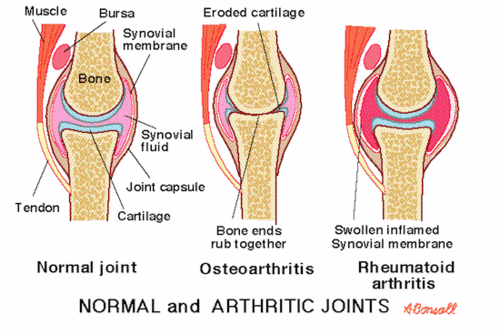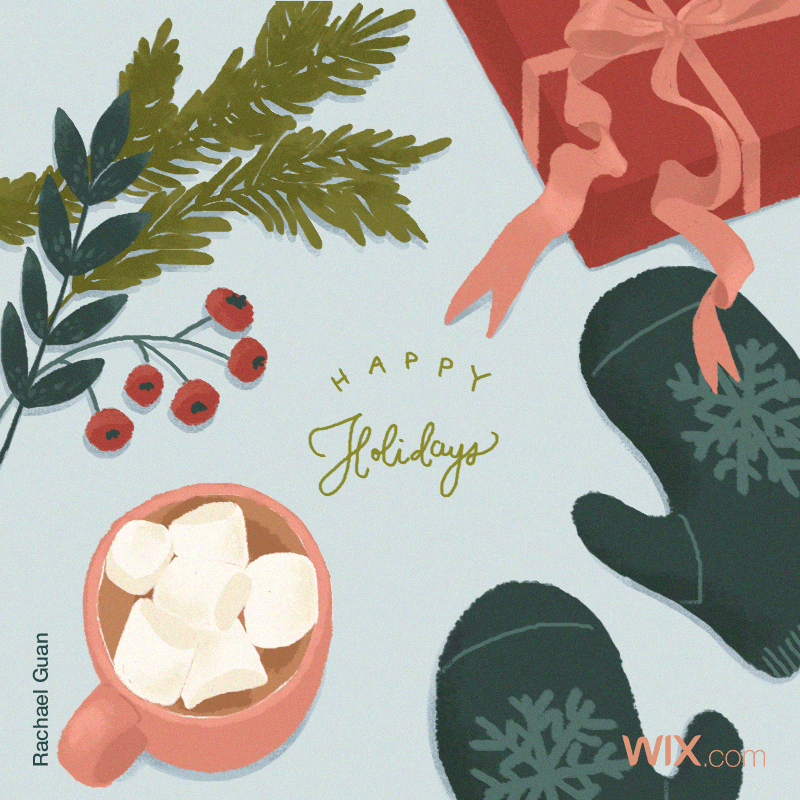FROZEN JOINTS! Why Weather Changes Can Cause Joint Pain.

The old story of grandpa complaining about his joints or someone saying, “It’s going to snow. I feel my knees.” Has some truth to it. But before we explain the reasoning why the pain comes on we should probably explain what is inside the joint that causes pain.
The common complaint of pain to the hands, knees, ankles, etc. come from a prior injury or some form of arthritis. If we look at the anatomy of a joint most of us know that a joint is essentially made of bones coming together and being surrounded by types of tissue (Muscle tissue, ligament tissue, cartilage tissue) and nerves. What is also included in a joint is a fluid call synovial fluid, commonly referred to as synovium. Synovium is a thick, oil like, fluid. It washes over the joint with motion to create a smooth motion. Synovium and cartilage (like meniscus and vertebrae discs) prevent the bones from rubbing against each other. When the bones rub against each other we get inflammation, which leads to a pain. How inflammation causes pain is another story for another time.
Now, picture a joint filled with synovium lubricant. This joint has a basic level of pressure within it. Research from Tufts University in Boston studied 200 people and found a correlation between 10° temperature changes and increased atmosphere pressure both increased pain. Although no studies conclusively say temperature and pressure are direct causes of pain to me there are some anatomy facts that make weather responsible for pain.

As temperature decreases we our tissues gets dray and less elastic, they get tighter (Hint: hydrating by drinking water helps). As the tissue tightens around our joints that regular pressure we have in our joints increases. As barometric pressure decreases we can get pain too. Yes, if too much pressure outside surrounds an inflamed joint it would increase pain. When we do not have enough pressure outside a joint continues to expand its inflammation and swelling. As joints swell they push upon nerves and the nerves tell us we got pain.
Another part of this discussion is what pain really is. Pain a whole is the brains way of defining what is wrong in the body. Outside of actual injury pain we can have traumatic psychological pain that causes us to perceive any motion of an injured area as a potential to cause more pain. Read more about this in my past post titled “The Pain Is Real, But It's Also In Your Head.”
Now what? Pain in joints are caused by changes in tissue mobility (muscles, ligaments, cartilage) and joint pressure. So how is exercise supposed to help us if we move we cause these things to change and then stimulate nerves. The thing about synovium is that as oily as it is its much like actual oil. If fatty oil is left in cold areas, it hardens. If we do not keep our joints warm and moving we end up hardening the tissues, thickening the synovium, and produces more joint pain. That memory of pain with movement prevents us from bothering to move the joint and the cycle continues.
Gentle and gradual increases in joint range of motion provides healthier joint space environment. Each joint has specific movements they are meant to go into. Each joint has specific levels of pressure that they can tolerate without risking injury and more pain. This might explain how Tai Chi, Yoga, Pilates, and water aerobics are so helpful to reduce pain for those living with arthritis.
Again, these are not absolute laws of science but I know movement is key and why I suggest my patients to just plain move, more often, move more and keep moving. As much as icing is an instinct for many it is not the only option to fight and reduce joint pressure changes. Massaging joint inflammation away from the joint. Moist heating to relax muscles and improve tissue mobility. Icing after long periods of weight bearing though an inflamed joint can reduce the onset of pain compared to if you didn’t do anything. (see also
"Stretch More Stress Less", "Move It Lose It", and "PREHabilitation" for some movement tips)
Joints themselves are all over our body. The spine, the hand, our arms and legs are all a bunch of bony joints connected together by muscles, ligaments, and nerves. Joint movements, massage techniques, icing and heating techniques are different for each joint but the main rule to keep moving is constant. Talk to your physical therapist or if you’re in the NYC area give us a ring to get you moving safely.










